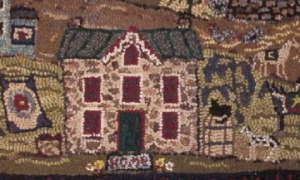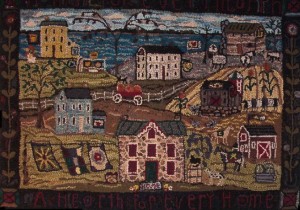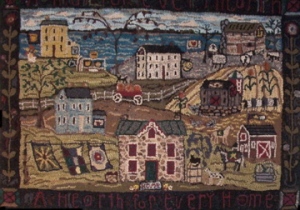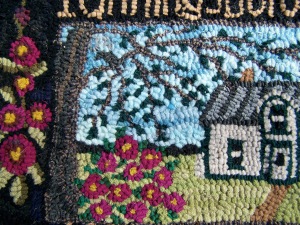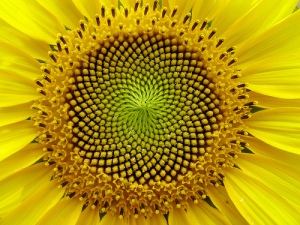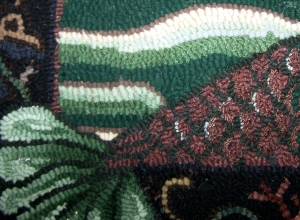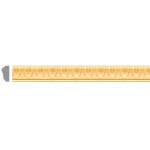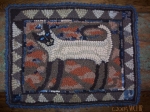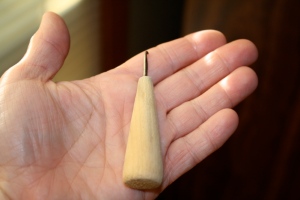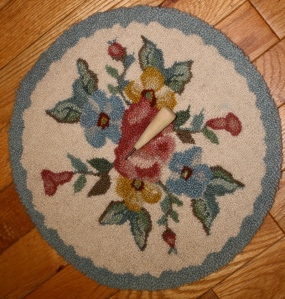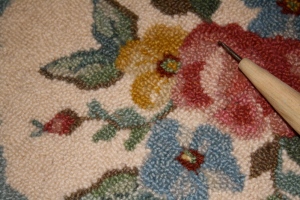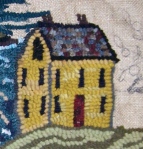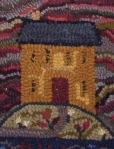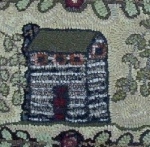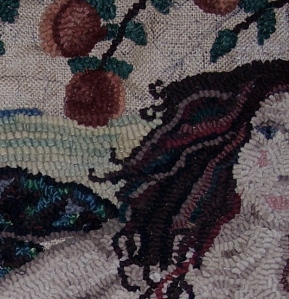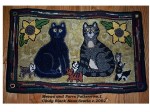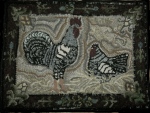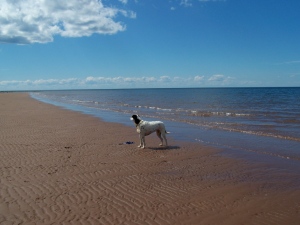A Mat for Every Hearth.
<For the grass, the upper right is a tweed heather (a mix of mauves, greens and beige). The other areas of green are a mix of abrashed wool with my favourite wool green dye using Majic Carpet Dyes.
Primitive Green
1/2 teaspoon moss green
speck of black
speck of yellow
1/8 teaspoon brilliant green
1/8 teaspoon of chocolate brown.
Dissolve the dye in a large measuring cup. Add 1/4 cup of vinegar. Pour over wool that is soaking in a large pot of hot water. Pour the dye over, stirring the wool a bit. Remember, the wool should be crowded in the pot to achieve the mottled uneven colouring.
Add a bit more vinegar so that the wool takes up all the dye while gently simmering. This recipe should dye about 1/3 of a wool blanket. Take out some of the wool before all the dye is absorbed to achieve lighter swatches. Place the dyed hot wool in another simmering pot and sprinkle over some salt. Gently simmer about 5 minutes to set the colour.

